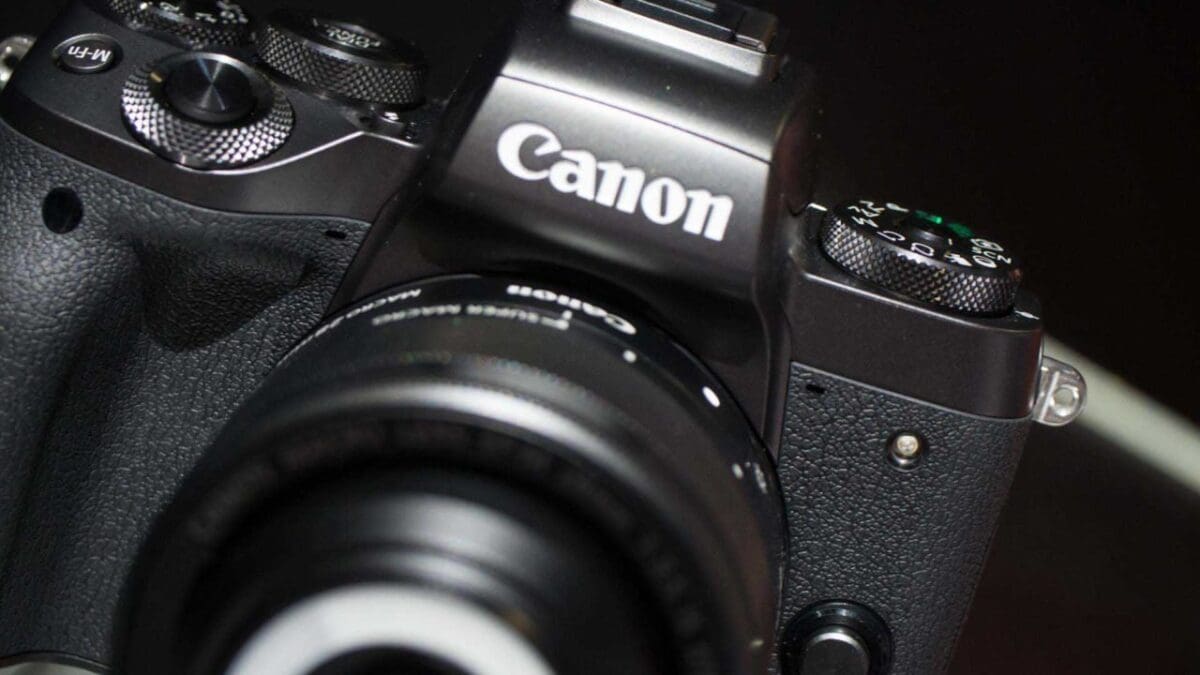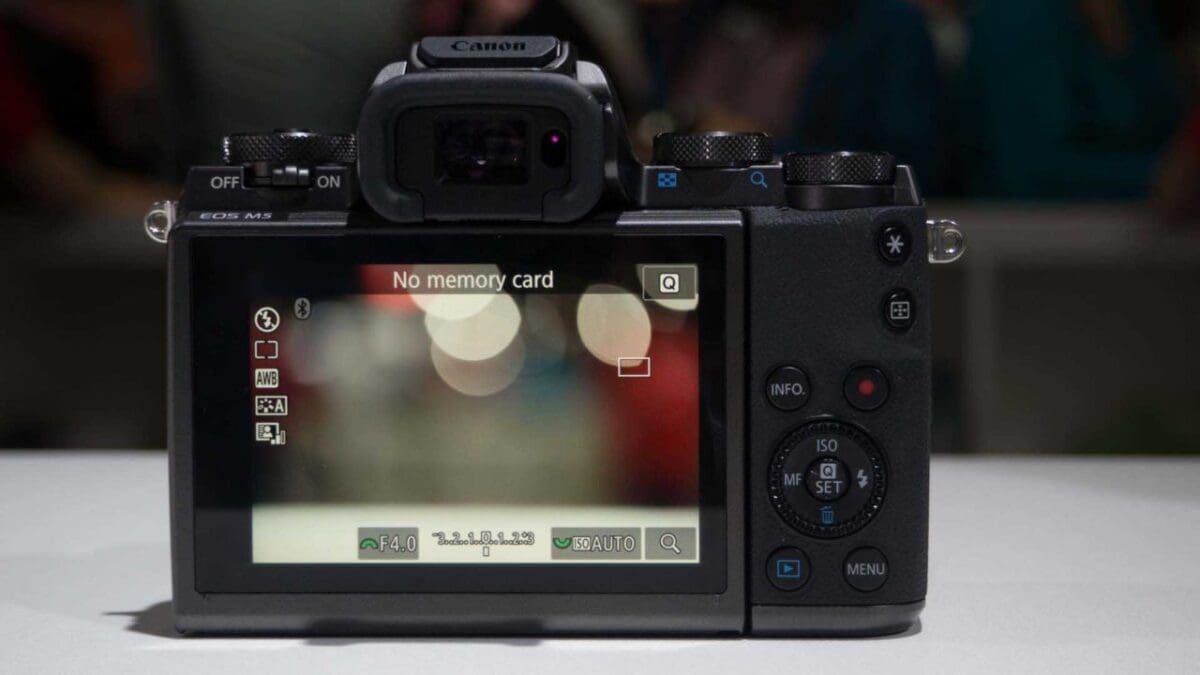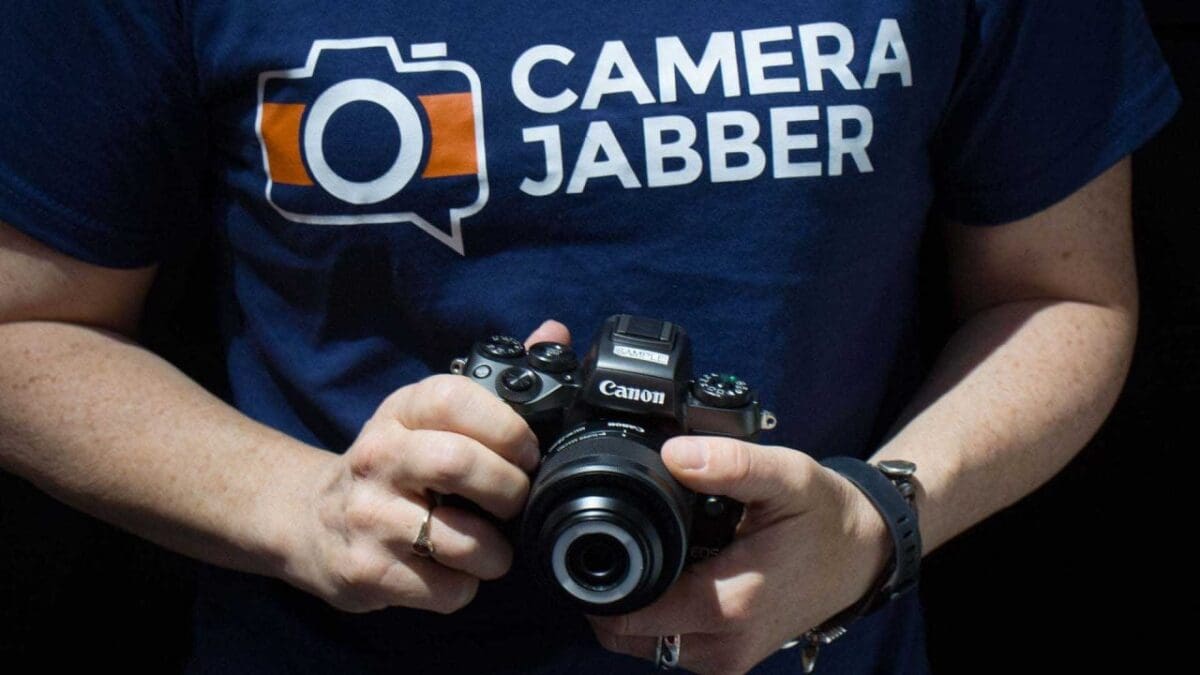I’m going to nail my colours to the mast straight away: I’ve been pretty excited about most of the Canon EOS M variants that have been announced over the last few years, but while their image quality has always been very good, they’ve been disappointing in the flesh. On this occasion I think that Canon might have got it right.
One of the major complaints about the EOS M, EOS M3 and EOS M10 is that they don’t have a viewfinder. That’s been sorted for the Canon M5, it has a 0.39-type OLED Electronic Viewfinder with 2,360,000 dots built-in. And it’s really good.
Shooting in the confines of the Canon stands at Photokina 2016, I found it gave a very clear, natural view of the world. The refresh rate also seems good, so there’s shouldn’t be any issues with keeping moving subjects in the frame.

Canon EOS M5 Hands on
My main gripe about the other Canon EOS M cameras is that their autofocusing system isn’t fast enough and the AF area isn’t precise enough. Worse still, I experienced an unacceptable number of occasions when the camera said the subject was sharp, but it very clearly wasn’t.
Obviously I want to test M5 properly before I commit, but my first impressions of the M5’s autofocusing system is that it is fast, even in quite gloomy conditions and it allows you to use a small AF point. It uses the same technology as the Canon 80D in live view and video mode, and it proved very capable in our tests.
I’m also pleased to discover that the AF point can be selected by touching the screen while you look through the viewfinder. Cleverly, Canon allows you to customise the area of the screen that you use to set the point. This means if you don’t want to use the whole area you can select to operate it via one of the corners of the screen. It’s useful if you find that your nose often does the point selection for you.
On the top of the M5 is a Dual Function button that can be set to reach up to four settings via the custom menu. Pressing the button toggles through the options on-screen, while rotating the dial around it adjusts the setting – a very neat solution that enables more controls to be squeezed onto a small camera.

Canon EOS M5 Hands on
Inside the M5 is a 24.2-million-pixel APS-C format (22.3 x 14.5mm) CMOS sensor, the same one as is in the Canon 80D. The 80D produces excellent quality images, which makes me confident that the M5 will as well – provided that the AF system is as good as I think it is.
Another area that interests me about the Canon M5 is that it has built-in Wi-Fi and Bluetooth technology. Once Canon’s app has been updated it should be possible to transfer images automatically to a smartphone without having to make a connection each time.
That’s something we’ve seen before in the Nikon D500 and D3400 (Nikon calls it SnapBridge) and it’s really useful. It encourages you to take photos on a proper camera rather than your phone because you can share whatever you shoot very easily. It’s also possible to control the camera remotely via the app and unlike Nikon, Canon usually gives you control over lots of features including exposure. I’m looking forward to giving Canon’s SnapBridge-esque system a whirl.
Hands on Canon EOS M5 review: Early verdict
I was excited when I first read the specification of the Canon EOS M5 and I’m even more excited about it now that I’ve got my hands on a sample. Provided that everything performs as it should, I think it will be a really good camera. The only fly in the ointment is the price. It’s way too high.



